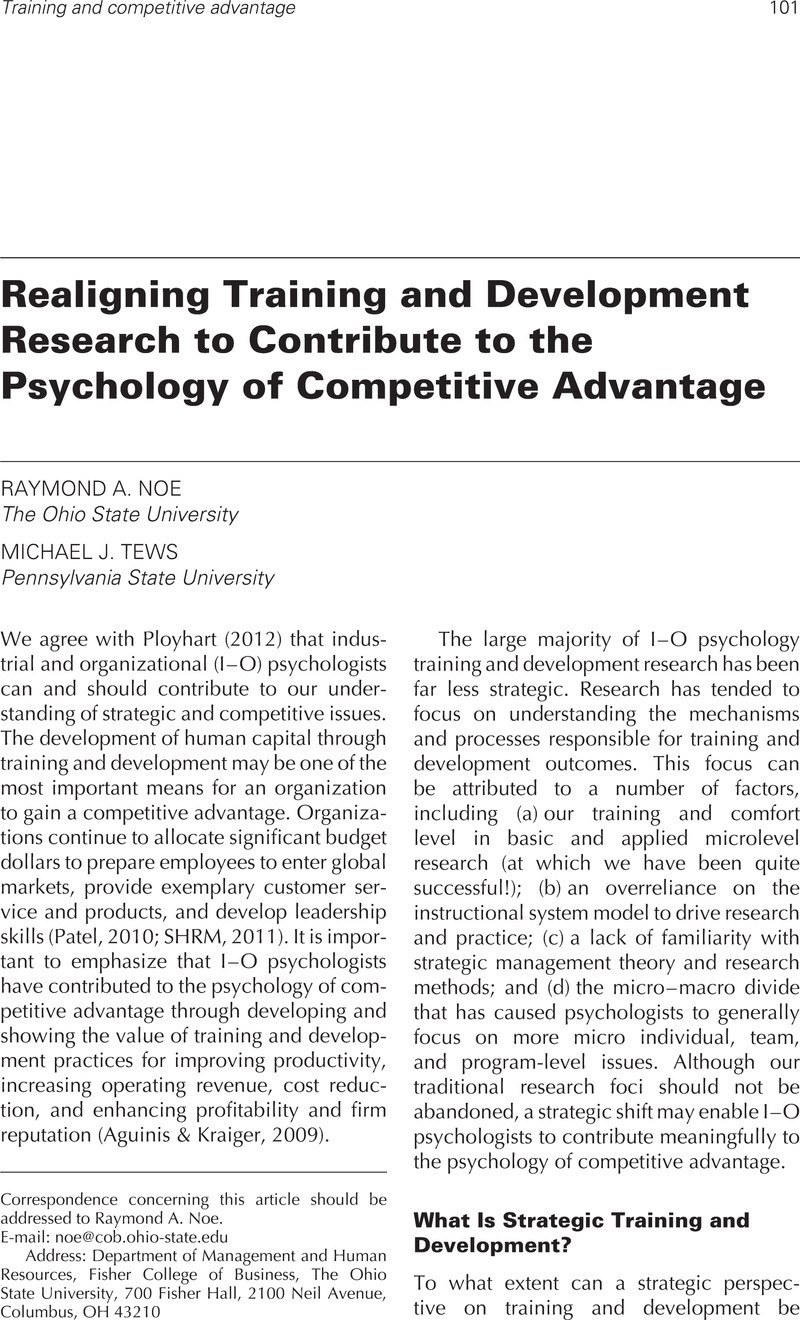Crossref Citations
This article has been cited by the following publications. This list is generated based on data provided by Crossref.
Ployhart, Robert E.
2012.
From Possible to Probable: The Psychology of Competitive Advantage.
Industrial and Organizational Psychology,
Vol. 5,
Issue. 1,
p.
120.
Singleton, Daniel
2014.
The Influence of Human Resource Development on Systemic Practices, Utility, and Organizational Results among Contracting Professionals.
SSRN Electronic Journal,
Jones, Robert G.
and
Stout, Tracy
2015.
Policing Nepotism and Cronyism Without Losing the Value of Social Connection.
Industrial and Organizational Psychology,
Vol. 8,
Issue. 1,
p.
2.
Howardson, Garett N.
and
Behrend, Tara S.
2015.
The relative importance of specific self‐efficacy sources in pretraining self‐efficacy beliefs.
International Journal of Training and Development,
Vol. 19,
Issue. 4,
p.
233.
Osorio‐Londoño, Andrés A.
Naranjo‐Valencia, Julia C.
and
Calderón‐Hernández, Gregorio
2020.
Training and its influence on competitive strategy implementation.
Human Resource Development Quarterly,
Vol. 31,
Issue. 2,
p.
149.
Gallagher, Peter T.
Mathieu, John E.
and
Reilly, Greg
2023.
Deploying to Develop Unit Human Capital Resources.
Journal of Management,
Vol. 49,
Issue. 8,
p.
2805.
Salamon, Janos
Blume, Brian D.
Orosz, Gábor
and
Nagy, Tamás
2023.
The moderating effect of coworkers’ training participation on the influence of peer support in the transfer process.
European Journal of Training and Development,
Vol. 47,
Issue. 10,
p.
15.





